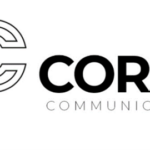 Unpacking the era of Influencer Marketing by Ronel De Kock, Media Planner at The MediaShop
Unpacking the era of Influencer Marketing by Ronel De Kock, Media Planner at The MediaShop
Influencer marketing is a form of communication which identifies individuals that have influence over potential buyers, then focuses marketing activities around these influencers – mainly online.
This kind of marketing uses the influence or reach that an individual has on social media to create awareness or hype around a particular brand. This can be very beneficial for brands as it captivates audiences by using individuals that consumers know and trust. As a result, marketers are finding influencer investments to be not only worthwhile but necessary. Marketers are also choosing to embrace turnkey providers such as Indahash or Webfluential for managing influencer marketing programmes as well as influencers themselves.
In the last few years, influencer marketing has grown exponentially, from being a mere tactic to being an important part of a company’s marketing budget. A study by Linqia found that 39% of marketers were planning to increase their influencer marketing budgets for 2018 and research shows that influencer marketing can provide a 960% return on investment making it an integral part of any marketing strategy.
Globally this marketing tool is being hailed as the next big thing in the marketing industry with one of the biggest advantages being authenticity. The desired target market is more receptive because it is coming from an ‘ordinary’ person they have an established social media relationship with, making the product placement seem more like a referral from a friend rather than an ad.
There are two main types of influencers, those being micro and macro influencers. The distinct difference between the two is that micro Influencers are ‘everyday’ people with less than 10,000 followers. A micro influencer will often ‘apply’ to become an influencer. Platforms such as Tribe and Takumi are communities of individuals who pride themselves on aesthetic social media accounts. These kinds of people usually have a good eye for photography and promoting content.
Macro Influencers are the famous household names. These kinds of people are often celebrities who have tens of thousands or even millions of followers. They are approached by a brand to feature their product or service on their social media profiles, with a contextual caption mentioning the brand.

By using macro influencers, a brand is positioned in front of millions of people. It’s great for visibility and awareness.
In a world of DStv catch ups and Netflix where people are actively avoiding ads, influencers fill the gap by speaking to a target market in a way that exposes them to your product that they can relate to without it feeling like an ad. At the end of the day, influencer marketing provides brands with a new age form of word of mouth.
So, now you know the difference, let’s go through the pros and cons of both. These are important to know, especially if your brand only has time (and/or budget) for one.
The Pros of Micro Influencers
They’re authentic: micro influencers work in a similar way to word of mouth – when they share a photo on Instagram of them enjoying a nutribar snack after a workout, you don’t question it (even if their photos are sometimes a little staged).
It’s often easier to believe that a micro influencer has actually bought or used a featured product. They tell you the nutribar is delicious and it’s high in protein, so you make a mental note of the brand.
This kind of authenticity attracts engagement, awareness and brand recall. So, the next time you go to buy a snack, you remember that extra yummy brand name you saw on Instagram (it looked so good!). It’s cost effective and more affordable than macro influencers.
Not all of the available influencer platforms give the brand rights to use the content thereafter. Takumi, for example, gives the brand full rights to usage after the photo has been posted. Other platforms like Tribe, charge the brand an additional fee to keep and use the image in other forms of marketing.
A micro influencer campaign is easy to execute and easy to use, while free online platforms such as Takumi.com and Tribegroup.com enable in-house marketers to take the lead.
The Cons of Micro Influencers
Capped visibility and reach – micro influencers obviously don’t have the vast followings of macro influencers, and with most influencer platforms setting a 10k follower limit, the visibility and reach of content is capped.
That isn’t to say this kind of content isn’t engaging – HubSpot reports that micro influencers, on average, receive 0.10% higher engagement rates than macro influencers.
Brands have less control over a micro influencer’s output. Often, the way influencer platforms work is that brands submit a brief stating what product needs to be featured, some information about the product and a general sense of how it should be represented. For example, an organic makeup brand might write a brief which explains why their product should never be shown in an environment of bold and brash colours or plastic materials. They may instead state all photographs must be taken in natural light, outdoors and must only feature neutral colours.
However, once this brief is written up, approved and sent to micro that’s it. The power is out of the brand’s hands. They often have little control over outputs. A micro influencer is trusted to post a quality piece of content, without any form of sign off from the client.
In many cases, you put your trust in the quality of influencers recruited by an influencer platform and ‘get what you’re given’.
ROI is often hard to prove. Performing a micro influencer campaign can be great for getting your product in front of lots of different people – but while visibility, reach and engagement can all be easily measured and reported on, it can be somewhat harder to directly attribute influencer engagement to direct sales. This is because influencer posts are great for driving awareness, but not at directing site traffic – especially as Instagram doesn’t allow links to be posted in captions.
The Pros of Macro Influencers
Brands have more control when running a macro influencer campaign. They can often choose the exact celebrity and give them precise instructions on what to post, meaning the outcome can be almost predicted.
This control also enables brands to build a stigma or reputation around their product – for example, a cast member of Made in Chelsea may support the ‘luxury’ representation of a product, whereas an Olympian may support strong, robust and professional connotations.
 However, this can go wrong – take BooTea for example. The diet brand asked Scott Disick to feature their product on his Instagram (see below caption).
However, this can go wrong – take BooTea for example. The diet brand asked Scott Disick to feature their product on his Instagram (see below caption).
A campaign that results in something like this can shatter a brands’ authenticity.
ROI in a macro influencer campaign is often easy to define, well, easier to define than that of a micro campaign, at least. This is because many brands will set up a unique offer code for a macro influencer campaign. The influencer will then post this along with their content. This makes it easier to attribute sales to a precise post or macro campaign as brands can easily track how many times an offer code was used online.
The Cons of Macro Influencers
People don’t believe or trust macro influencers as product placement is often obvious, and not very authentic.
People can see through a devised Instagram post, and therefore trust the content less. While this kind of marketing is great for reach and awareness, people often don’t trust that the influencer really uses the product.
Macro influencer campaigns are more expensive. These celebrities will also generally require much higher payments than micro influencers.
One piece of content from a celebrity influencer could cost you an astronomical amount, depending on their status and follower count. If you’re thinking of getting the Kardashians involved, you better have a worthy budget knocking about. Believe it or not, these endorsements now make up around 25% of the Kardashians’ income, demonstrating just how expensive they can be.
Although their audiences might be bigger, and your content will therefore see a much higher reach, you may also be able to get a lot more out of lots of single posts with micro influencers, as opposed to one expensive macro influencer post.
Macro influencer campaigns are a little harder to execute as they’ll often take longer to organize, and may require a PR agency. Getting hold of a celebrity or their manager is one thing, but standing out amongst many other requests, is another.
Celebrities can also be picky with which brands they endorse, so demonstrating how your product will raise their profile and personal brand is also important.
So, which one should you go with? Both macro and micro influencer campaigns have their pros and cons, but in most instances, I’d choose a micro campaign. Authenticity is so important – Millennials, in particular, crave it.
If your budget allows, it is recommended to trial both a micro and macro influencer campaign, starting with micro to elicit a response. Report on which does better in order to develop your future strategy. Assess your KPIs and choose accordingly.
- Automation and AI: Super-Tools to level up your business - 24th July 2024
- Salesforce Launches First Autonomous AI Agent - 19th July 2024
- WPP champions inclusive creativity at inaugural Unite South Africa Awards during Pride Month - 19th July 2024






